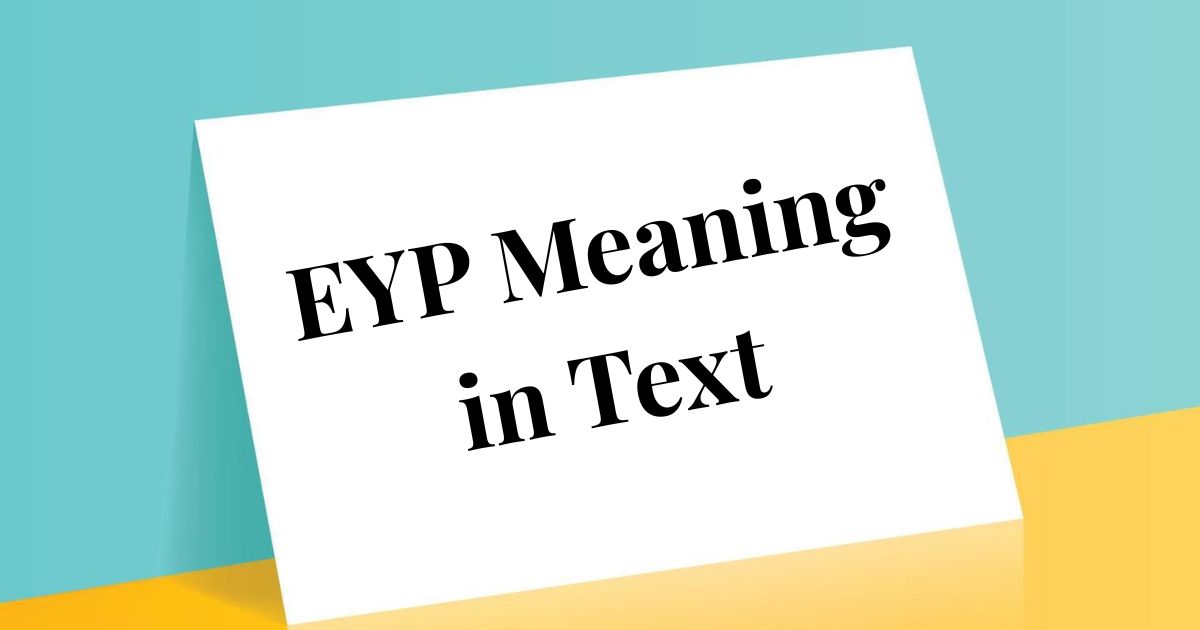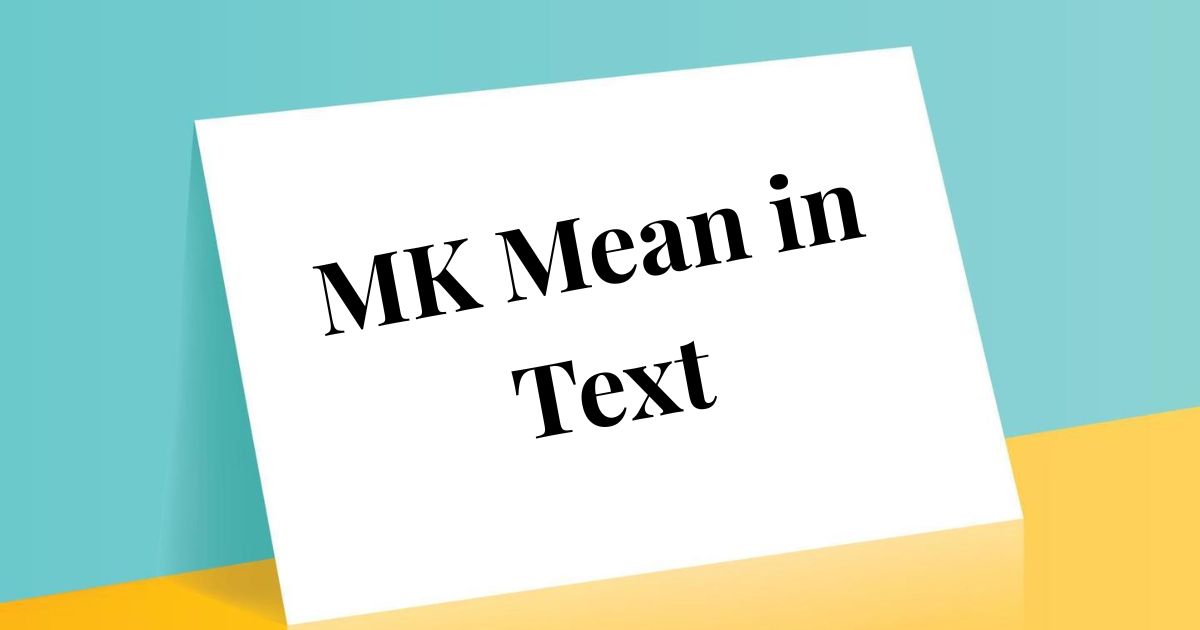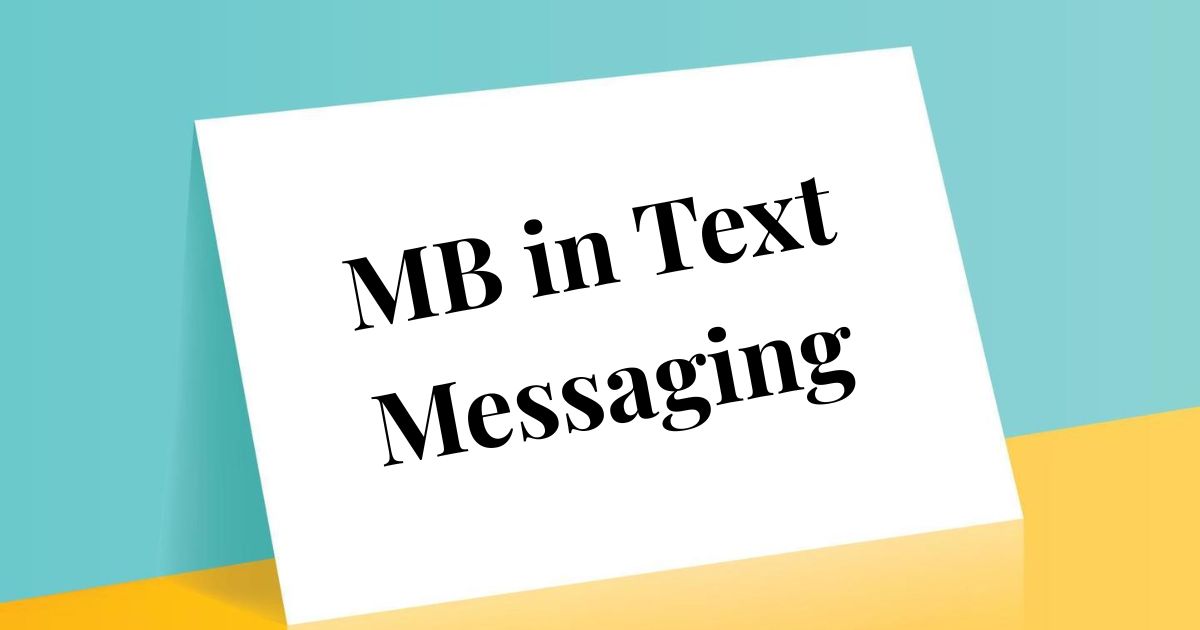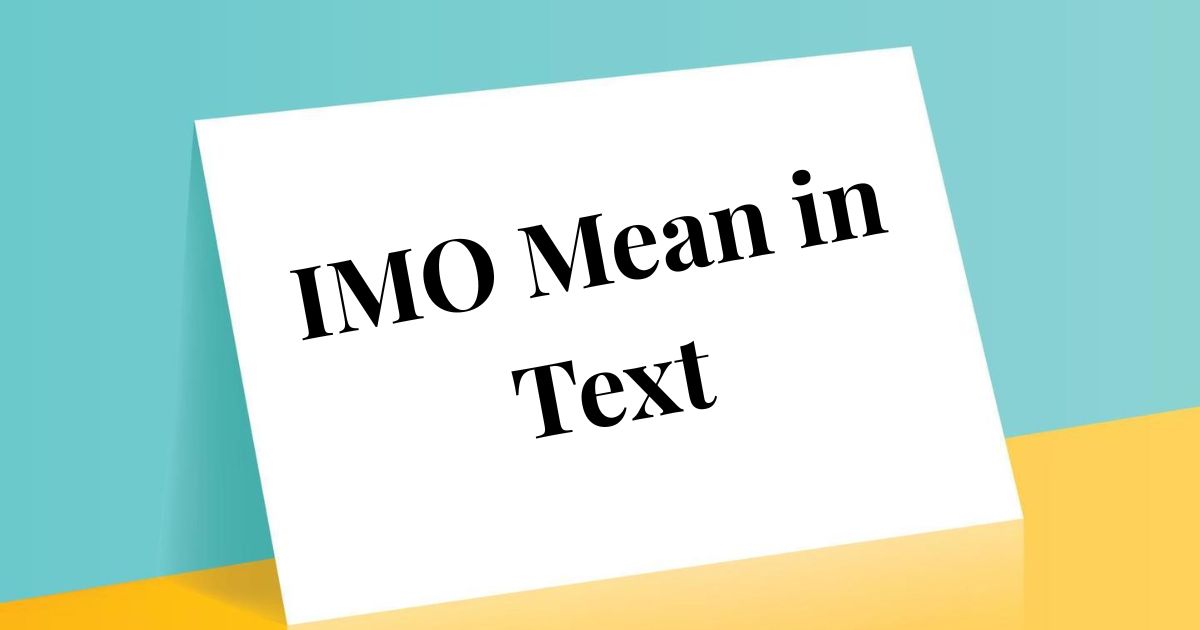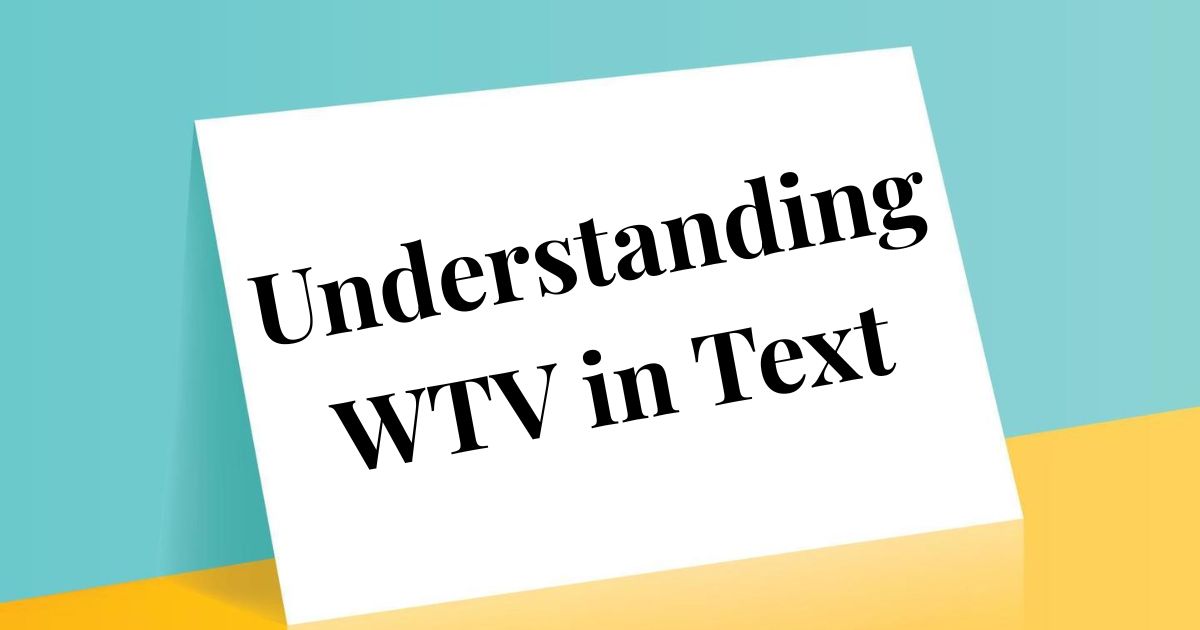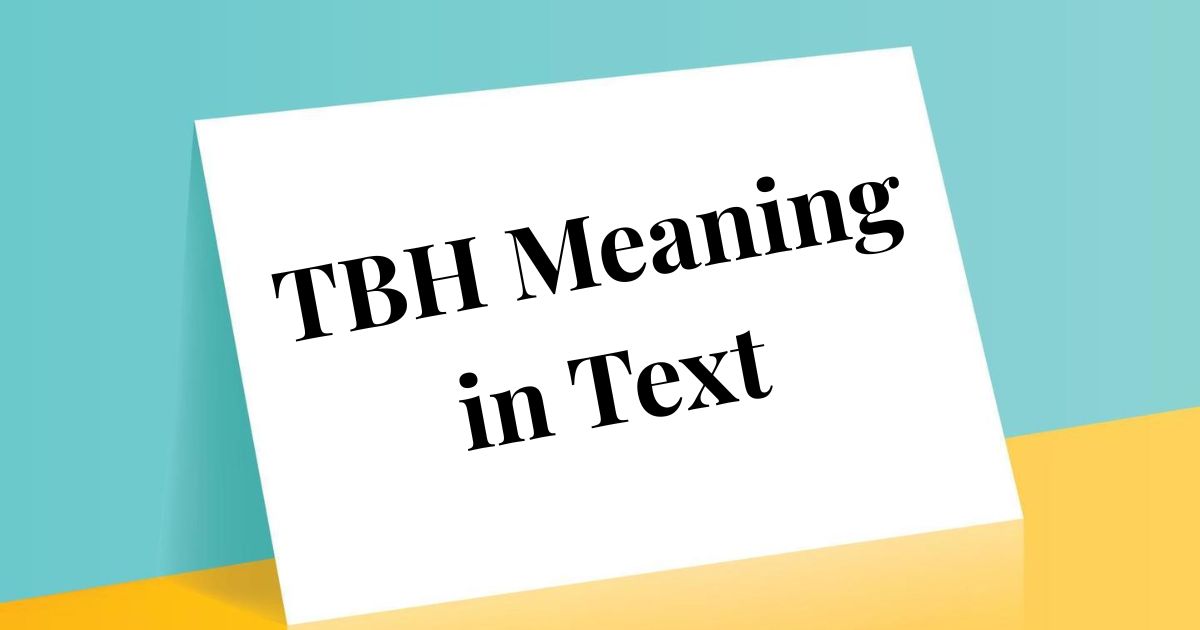Digital communication creates constant opportunities for confusion, and EYP represents one of the lesser-known yet contextually important abbreviations emerging in American texting culture. Whether you’ve received this puzzling three-letter message alongside a gift, spotted it in seasonal greetings, or wondered how to respond appropriately when someone uses it with you, understanding what EYP actually means—and knowing when sophisticated alternatives serve you better—can transform potentially awkward exchanges into genuinely warm moments that strengthen connections rather than creating confusion across every relationship where thoughtful gift-giving matters.
What Does “EYP” Stand For in Text?
EYP stands for “Enjoy Your Present” in contemporary digital communication.
This three-letter abbreviation functions as a gift-giving phrase that accompanies presents, packages, or thoughtful gestures.
Think of EYP as shorthand for “I hope you enjoy this gift I’ve given you” or “Please take pleasure in what I’ve selected for you.”
The phrase serves several communicative purposes in gift-giving contexts:
Expressing gift-giving intention: “EYP!” transforms simple object transfer into acknowledged present with positive wishes attached.
Creating positive framing: EYP emphasizes the recipient should focus on enjoyment rather than reciprocation obligations or gift value.
Softening gift anxiety: For givers uncertain if their choice was perfect, EYP shifts focus to wishing enjoyment rather than claiming perfection.
Closing gift-giving moment: EYP provides linguistic conclusion to the exchange, signaling conversation can move past the gift itself.
Expressing care efficiently: Three letters convey “I thought of you, selected something, and hope it brings you happiness.”
According to greeting card industry research (2024), gift-giving language has become increasingly abbreviated in digital contexts, with phrases like EYP emerging as Gen Z and younger Millennials seek efficient yet warm ways to frame presents.
However, EYP remains relatively uncommon compared to mainstream abbreviations like LOL or OMG—many recipients won’t recognize it immediately, creating potential confusion that undermines the warm intention behind using it.
🧠 Contextual Example:
Scenario: Your friend’s birthday arrives and you’ve mailed them a package.
Your text: “Package should arrive today! EYP 🎁”
Meaning: You’re alerting them to expect the delivery while expressing your hope they’ll enjoy what you selected.
Potential confusion: If they don’t know EYP, they might respond “What does EYP mean?” which deflates the moment’s warmth by requiring explanation.
Better alternative: “Package should arrive today! Hope you absolutely love what I picked out for you 🎁”
This communicates identical sentiment with zero confusion risk while maintaining personal warmth.
The Tone of “EYP” and Its Usage in Real-Life Scenarios
EYP carries inherently positive, warm tone when recipients understand it—the phrase explicitly wishes enjoyment and pleasure.
However, the abbreviation format creates several tonal complications:
Casualness that might minimize thoughtfulness: Three letters can feel insufficiently personal for significant gifts where recipients expect more elaborate sentiment.
Generational/cultural barriers: Older recipients or those unfamiliar with texting shorthand may find abbreviations impersonal or confusing.
Emotional distance: Abbreviated gift-giving language can feel like you’re not invested enough to write complete thoughts about something you presumably put thought into selecting.
Efficiency over warmth trade-off: While EYP saves typing, gift-giving moments often benefit from slower, more personal communication that honors the emotional significance.
According to relationship psychologists at UC Berkeley, gift-giving represents symbolic communication where “the wrapping matters as much as the contents”—including linguistic wrapping in how you frame the present.
Research shows recipients value personal, thoughtful communication around gifts more than brief efficiency, even in digital contexts.
EYP works best when:
Texting close friends who understand your communication style and abbreviations
Following up on casual, small gifts where elaborate sentiment might feel disproportionate
Communicating with people who regularly use similar abbreviated language
The gift context is clearly established and EYP functions as final warm wish rather than entire message
You’ve already expressed sentiment verbally and EYP serves as text reminder
EYP feels insufficient when:
Accompanying significant gifts requiring more elaborate emotional expression
Communicating with recipients who might not understand the abbreviation
First-time gift exchanges where you’re establishing communication norms
Formal or semi-formal gift-giving contexts like workplace gifts or elder family members
The entire communication rests on those three letters without supporting context
EYP in Different Communication Contexts
EYP’s appropriateness shifts dramatically based on specific gift-giving scenarios.
1. After Giving a Gift 🎁
Scenario: You’ve handed someone a wrapped present in person and they’ve opened it.
EYP usage: Texting “EYP!” later feels disconnected from the actual moment—you already witnessed their reaction.
Better approach: In-person gift-giving deserves in-person communication like “I really hope you enjoy it!” or “I had fun picking that out for you.”
Text follow-up alternative: “Hope you’re enjoying the [gift]—let me know if it works well for you!” provides specific reference and invites continued connection.
Why it matters: Gift-giving creates emotional moments that benefit from communication matching the moment’s intimacy level.
2. Holiday or Seasonal Gift Wishes 🎄
Scenario: Sending holiday gifts to multiple friends or family members.
EYP usage: “Happy Holidays! Your gift is in the mail—EYP!” might feel efficient when sending similar messages to many people.
Concern: Even in bulk communications, personalization strengthens relationships more than efficiency saves time.
Better approach: “Happy Holidays! I sent something I think you’ll really appreciate based on what you mentioned loving last time we talked.”
Why it matters: Even small personalization details—referencing specific conversations or their interests—dramatically increase perceived thoughtfulness.
According to gift psychology research from Cornell University, recipients rate personalized gift communication 73% more positively than generic gift-giving language, regardless of actual gift value.
3. In a Romantic Setting 💌
Scenario: Giving a gift to romantic partner for anniversary, Valentine’s Day, or spontaneous gesture.
EYP usage: “EYP babe ❤️” feels emotionally insufficient for romantic gift-giving where sentiment matters tremendously.
Problem: Romantic contexts demand emotional elaboration that abbreviations cannot provide—your partner deserves more than three letters for something you selected thinking of them.
Better approach: “I saw this and immediately thought of you—hope it shows how much you mean to me. Enjoy, love!”
Why it matters: Romantic gift-giving language becomes part of relationship narrative—years later, “enjoy your present” doesn’t feature in “remember when you gave me…” stories the way thoughtful sentiment does.
4. In a Casual Office Culture
Scenario: Workplace with relatively casual culture where colleague birthdays involve small gifts.
EYP usage: “Happy birthday! Left something on your desk—EYP!” might work in very casual environments with younger colleagues.
Caution: Professional contexts benefit from slightly elevated language even when culture is casual.
Better approach: “Happy birthday! Left a little something on your desk to celebrate—hope you enjoy it!”
Why it matters: Workplace relationships exist on spectrum between personal and professional—language should honor that complexity rather than defaulting to most casual option.
Is “EYP” Appropriate in Professional Settings?
EYP has extremely limited appropriateness in professional contexts for several compelling reasons:
Abbreviations undermine professionalism: Business communication standards favor complete sentences that demonstrate communication competence.
Not universally understood: Many professionals, especially senior leaders and older colleagues, won’t recognize EYP, creating confusion.
Insufficient for professional gift-giving: Workplace gifts—whether to clients, supervisors, or colleagues—deserve more elaborate framing than three-letter abbreviations.
Cultural and generational divides: International colleagues and cross-generational communication require clarity over efficiency.
Documentation and permanence: Professional communications become record—abbreviated gift-giving looks less thoughtful when reviewed later.
According to LinkedIn’s 2024 Workplace Communication Study, 86% of HR professionals rate communication quality as “critical” or “very important” in performance evaluations, with casual abbreviations cited as common professionalism concerns.
Professional alternatives always serve better:
Instead of: “Client gift sent—EYP!”
Use: “I’ve sent a gift to our client as discussed—I hope it effectively communicates our appreciation for their partnership.”
Instead of: “Happy work anniversary! EYP 🎂”
Use: “Happy work anniversary! I left a small gift on your desk to mark this milestone—thank you for being such a valuable team member.”
Professional contexts reward thoughtfulness demonstrated through complete, warm communication that honors both the relationship and the moment’s significance.
Polite, Professional & Casual Alternatives to “EYP”
EYP works in extremely limited casual contexts, but most situations benefit from clearer, warmer alternatives.
🔹 Polite Alternatives (Neutral/Formal):
“I hope you enjoy this gift.”
Clear, warm, universally understood—works across all formality levels and demographics.
“Please enjoy this with my compliments.”
Slightly elevated formality perfect for semi-formal occasions or gifts to acquaintances.
“I hope this brings you joy.”
Focuses on emotional impact rather than just enjoyment—feels more heartfelt than functional.
“Wishing you happiness as you enjoy this.”
Combines explicit positive wishes with gift reference—appropriate for formal contexts.
“May this gift bring you pleasure.”
Traditional phrasing that honors gift-giving formality while remaining warm and sincere.
🔹 Professional Alternatives (Business/Courtesy):
“I hope you find this thoughtful gesture meaningful.”
Professional framing that positions gift as relationship investment rather than transactional object.
“Please accept this token of our appreciation.”
Business-appropriate language for client gifts, vendor relationships, or formal workplace exchanges.
“We hope you enjoy this as a small expression of our gratitude.”
Corporate-friendly while maintaining warmth—perfect for company-to-client gift-giving.
“This gift comes with our sincere appreciation for your partnership.”
Explicitly connects gift to business relationship, making purpose clear while remaining warm.
“We trust you’ll find this selection both useful and enjoyable.”
Balances practical and pleasure aspects—good for professional gifts combining utility and thoughtfulness.
🔹 Casual/Friendly Alternatives:
“Hope you love it!”
Enthusiastic and brief while remaining clear—perfect for close friends and casual contexts.
“Enjoy! Can’t wait to hear what you think.”
Invites response and continued connection around the gift—builds conversational bridge.
“This made me think of you—hope it makes you smile!”
Personal touch explaining selection thought process—shows genuine consideration.
“You’re gonna love this one!”
Confident enthusiasm that builds anticipation—great for gifts you’re genuinely excited about.
“Treat yourself—you deserve something special!”
Combines gift-giving with affirming the recipient’s worthiness—emotionally warm approach.
How to Choose the Best Alternative to “EYP”
Selecting the optimal EYP replacement requires analyzing multiple contextual factors:
✅ 1. Audience
Close friends or family: Casual alternatives like “Hope you love it!” match relationship intimacy.
Professional colleagues: Elevated options like “I hope you find this meaningful” maintain appropriate boundaries.
Romantic partners: Personal, elaborate expressions honor relationship significance.
Acquaintances or newer relationships: Polite, clear alternatives like “I hope you enjoy this gift” establish warm but respectful tone.
Older relatives or traditional contacts: Formal phrasing like “May this bring you joy” respects generational preferences.
International or multicultural contacts: Avoid idioms; use clear statements like “I hope you enjoy this” that translate well.
✅ 2. Medium of Communication
Text messages: Brief but clear alternatives work well—”Hope you love it! 🎁”
Email: More elaborate alternatives suit the medium—”I hope you enjoy this gift and that it reflects how much I appreciate our friendship.”
Handwritten cards: Traditional, heartfelt language honors the personal medium—”May this gift bring you as much joy as you’ve brought to my life.”
Social media messages: Balance public visibility with warmth—”Hope you absolutely love your gift!”
In-person conversations: Spoken gift-giving deserves complete sentences delivered with vocal warmth that written abbreviations cannot capture.
✅ 3. Occasion
Birthdays: Celebratory energy like “Hope this makes your birthday even more special!”
Holidays: Seasonal warmth like “Wishing you joy as you enjoy this holiday gift!”
Thank-you gifts: Gratitude emphasis like “Please enjoy this as a small thank you for everything you’ve done.”
Sympathy or support gifts: Gentle care like “I hope this brings some comfort during this difficult time.”
Romantic occasions: Emotional depth like “I chose this thinking about how much you mean to me—I hope you love it.”
Professional milestones: Achievement acknowledgment like “Please enjoy this in celebration of your well-deserved promotion.”
The Nuance of Tone When Using “EYP”
EYP’s abbreviated nature creates inherent tonal limitations regardless of context:
Emotional efficiency over depth: Three letters cannot convey the layered emotions thoughtful gift-giving typically involves—affection, care, consideration, joy in giving.
Potential perceived laziness: Abbreviating gift-giving language might suggest you didn’t invest enough care into communication to match investment in gift selection.
Missing personalization opportunities: Complete sentences allow explaining why you chose this gift, what made you think of them, or how you hope they’ll use it—personalization that abbreviations exclude.
Reduced emotional impact: Gift-giving moments create emotional connections—language that honors those moments builds relationship depth abbreviations cannot achieve.
According to social psychology research from Princeton, gift-recipients rate thoughtful communication around gifts as 64% as important as the gift itself in determining how valued they feel.
Your gift-giving language matters tremendously—it’s part of the gift itself, not just instrumental communication about it.
15 Carefully Crafted Examples of What to Say Instead of “EYP”
Here are 15 complete, warm alternatives demonstrating various contexts and relationships:
1. “Here’s something special—hope it makes your day brighter.”
Context: Sending small spontaneous gift to friend going through tough time
Why it works: Combines gift presentation with explicit positive wish; shows care without being overly serious.
2. “Please enjoy this little treasure I picked just for you.”
Context: Thoughtful gift for close friend or family member where selection process was careful
Why it works: “Treasure” elevates the gift emotionally; “just for you” emphasizes personalized selection.
3. “Wishing you a delightful experience with this gift!”
Context: Experience-based gifts like concert tickets, spa vouchers, or restaurant gift cards
Why it works: Focuses on experiential enjoyment rather than object itself—appropriate for experience gifts.
4. “May this small token bring you great joy.”
Context: Modest gifts where you want to emphasize emotional rather than material value
Why it works: “Small token” manages expectations while “great joy” emphasizes emotional intention over monetary value.
5. “Enjoy every bit of it—you deserve it!”
Context: Treat gifts like specialty foods, luxury items, or indulgent presents
Why it works: Permission-giving language (“you deserve it”) addresses guilt recipients sometimes feel accepting gifts.
6. “Hope this puts a smile on your face.”
Context: Playful or humorous gifts, small surprises, or lighthearted presents
Why it works: Focuses on immediate emotional response rather than long-term use—perfect for fun gifts.
7. “This is just a little something to show I care.”
Context: Thinking-of-you gifts, random acts of kindness, relationship maintenance presents
Why it works: Explicitly states relationship motivation behind gift-giving—builds emotional connection.
8. “Hope you love it as much as I loved picking it out for you.”
Context: Gifts where selection process was particularly enjoyable or meaningful to you
Why it works: Shares your joy in giving, not just their receiving—creates reciprocal emotional experience.
9. “Here’s a thoughtful surprise—unwrap some happiness!”
Context: Wrapped presents where unveiling creates anticipation and excitement
Why it works: “Unwrap happiness” transforms physical action into emotional experience—builds anticipation.
10. “This is for you—because you’re awesome.”
Context: Appreciation gifts for friends, colleagues, or family showing gratitude for who they are
Why it works: Explicitly celebrates their character rather than accomplishments—affirms intrinsic worth.
11. “Open it with joy—I had fun choosing it.”
Context: Gifts where selection process involved genuine enjoyment and consideration
Why it works: Invites them into shared emotional experience—giving and receiving both become joyful.
12. “Here’s a gift with your name written all over it.”
Context: Highly personalized gifts perfectly matching recipient’s tastes, interests, or needs
Why it works: Emphasizes how well you know them—validates relationship depth through selection accuracy.
13. “Couldn’t resist getting this for you—hope it brings a smile.”
Context: Impulse gifts where you saw something and immediately thought of them
Why it works: Explains spontaneous thought process—shows they’re on your mind even during ordinary activities.
14. “A little something to remind you you’re appreciated.”
Context: Thank-you gifts, appreciation presents, or relationship maintenance gestures
Why it works: Creates lasting emotional impact beyond immediate enjoyment—gift becomes ongoing appreciation reminder.
15. “Nothing fancy—just something from the heart. Enjoy!”
Context: Simple, heartfelt gifts where emotional intention matters more than monetary value
Why it works: Manages expectations around gift value while emphasizing emotional authenticity—honors modest budgets gracefully.
Why Using Alternatives to “EYP” Matters in 2025 and Beyond
Digital communication increasingly risks stripping emotional nuance from human connection through excessive abbreviation.
Gift-giving represents one of humanity’s oldest relationship-building rituals—language surrounding it deserves care that honors that significance.
Reasons thoughtful alternatives matter:
Preserves emotional depth: Complete sentences carry emotional nuance abbreviations cannot—gift-giving deserves that depth.
Builds relationship quality: Thoughtful communication compounds over time into strong relationship foundations.
Demonstrates care: Investing seconds in complete sentences shows you value the relationship enough to communicate thoughtfully.
Creates positive memories: Years later, people remember how gifts made them feel—thoughtful language contributes to those lasting feelings.
Models communication values: How you communicate about gifts teaches children, younger colleagues, or others observing your example.
Crosses generational divides: Clear, warm language works universally where abbreviations create confusion or feel impersonal.
Honors gift-giving traditions: Cultural and family gift-giving traditions deserve language respecting their emotional and social significance.
According to anthropological research on gift-giving, the communication surrounding gifts functions as critical “framing” that determines whether presents build or strain relationships—thoughtful framing builds; careless framing strains.
Your gift-giving language is itself a gift—care, thought, and emotional investment wrapped in words that honor both the object and the relationship.
Common Misunderstandings of EYP and Their Clarifications
EYP’s relative unfamiliarity creates several common confusion points:
Misreading as “End Your Program”: Technical contexts might interpret EYP as software instruction—clarification becomes necessary.
Confusion with “Enjoy Your Pizza”: Food-related contexts might lead recipients toward culinary interpretation—especially if gift isn’t specified clearly.
Assumption it’s typo: Some recipients might think EYP is mistyped “ESP” or another common abbreviation—they’ll hesitate asking for clarification.
Cultural unfamiliarity: International recipients or non-native English speakers likely won’t recognize EYP—creating uncomfortable confusion during gift-giving moments.
Generational gaps: Older recipients may not understand any abbreviation beyond the most common—they might not ask what it means out of embarrassment.
These misunderstanding risks all suggest the same solution: use clear, complete alternatives that ensure your warm intention lands correctly without requiring explanation or creating confusion that undermines the gift-giving moment’s emotional impact.
Quick Recap: How to Master “EYP” and Its Alternatives
EYP stands for “Enjoy Your Present”—brief gift-giving phrase emerging in casual digital communication.
Use EYP only when: Texting very close friends who know abbreviations; following casual small gifts where elaboration might feel disproportionate; communicating with people who regularly use similar abbreviated language.
Avoid EYP when: Communicating with people unfamiliar with abbreviation; professional contexts requiring polished communication; significant gifts deserving emotional elaboration; formal occasions honoring gift-giving traditions; romantic contexts where sentiment matters tremendously.
Choose alternatives based on: Audience demographics and preferences; communication medium formality; occasion significance and emotional weight; relationship intimacy level; cultural and generational considerations.
Better alternatives range from: Casual options like “Hope you love it!” for close friends; polite choices like “I hope you enjoy this gift” for acquaintances; professional phrasing like “Please accept this with our appreciation” for business contexts; romantic elaborations like “I chose this thinking about how much you mean to me.”
Remember: Gift-giving language itself represents a gift—invest care in communication matching the thought you invested in selection.
Read More: What Does IMO Mean in Text? Polite, Professional & Casual Alternatives Explained 2025
Conclusion
EYP represents efficient shorthand that works in extremely limited casual contexts among close friends familiar with abbreviations, yet gift-giving moments deserve communication honoring their emotional and relational significance through complete, warm, personalized language that ensures your thoughtfulness lands clearly without confusion. Master the context-appropriate alternatives explored here, resist abbreviating relationship-significant moments, invest seconds crafting warm gift-giving language matching your selection care, and prioritize emotional clarity over typing efficiency—your relationships will deepen, your gifts will resonate more powerfully, and your reputation as someone who genuinely cares will strengthen across every meaningful connection navigating 2025’s digital landscape where how we communicate about gifts matters as much as the presents themselves.

I’m Борис, Writing social media related contents, Here I’m share cool Instagram captions and fun content. Enjoy creative ideas, trends, and tips for social media success!
